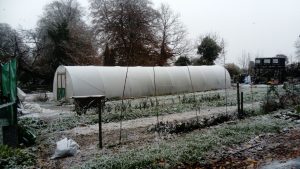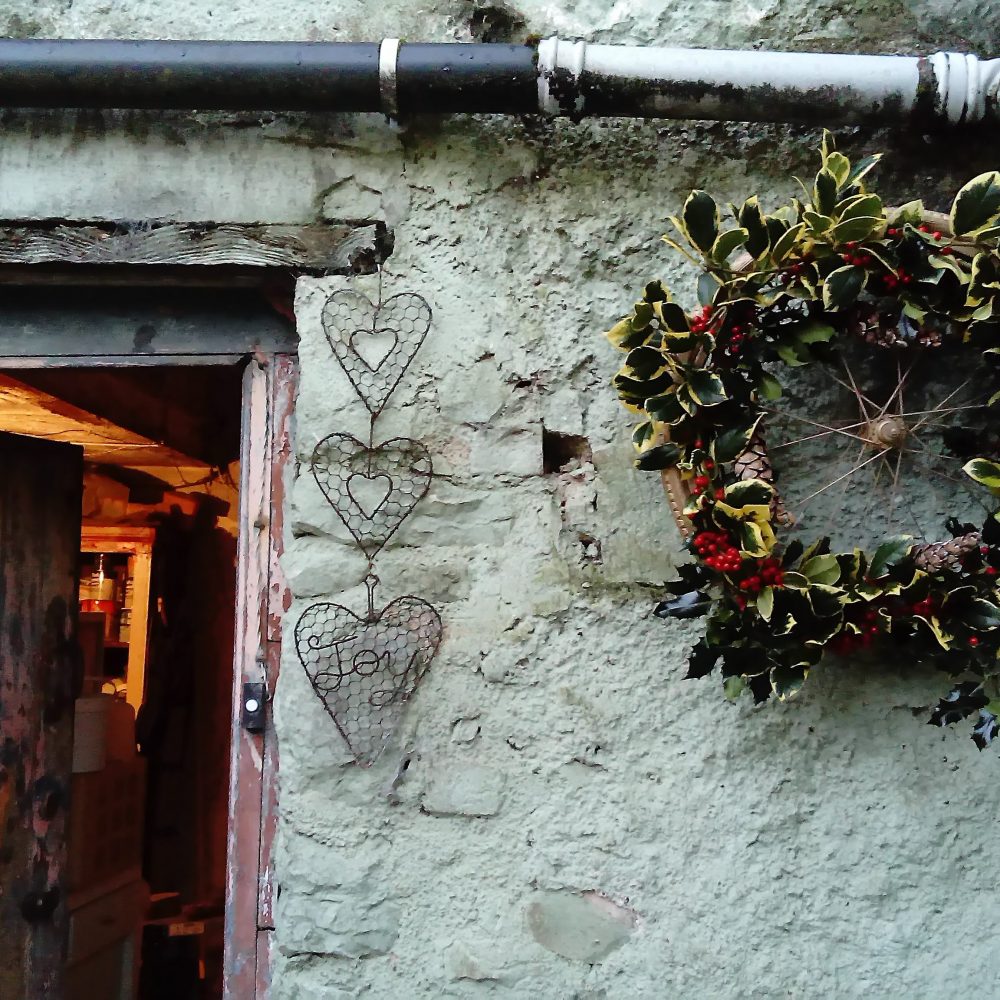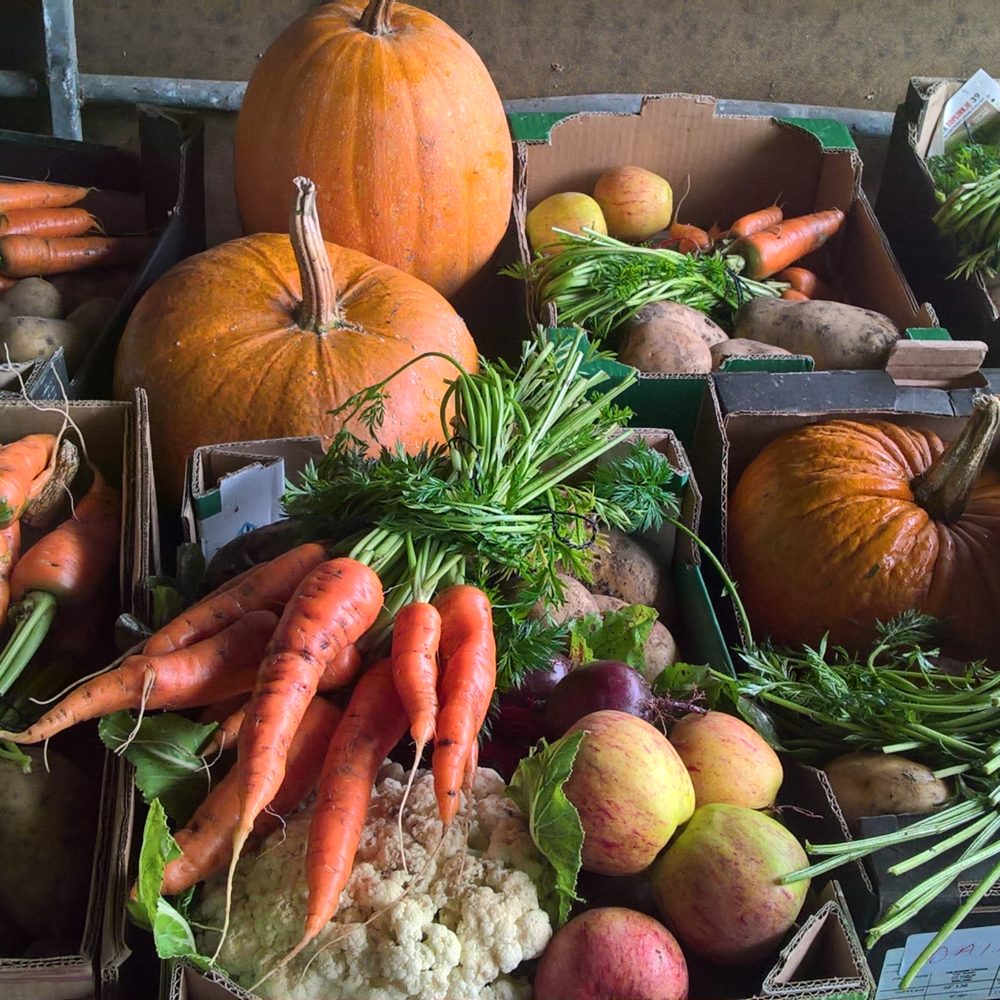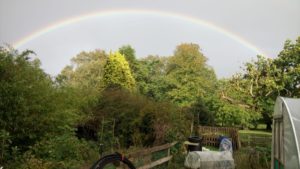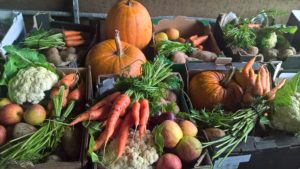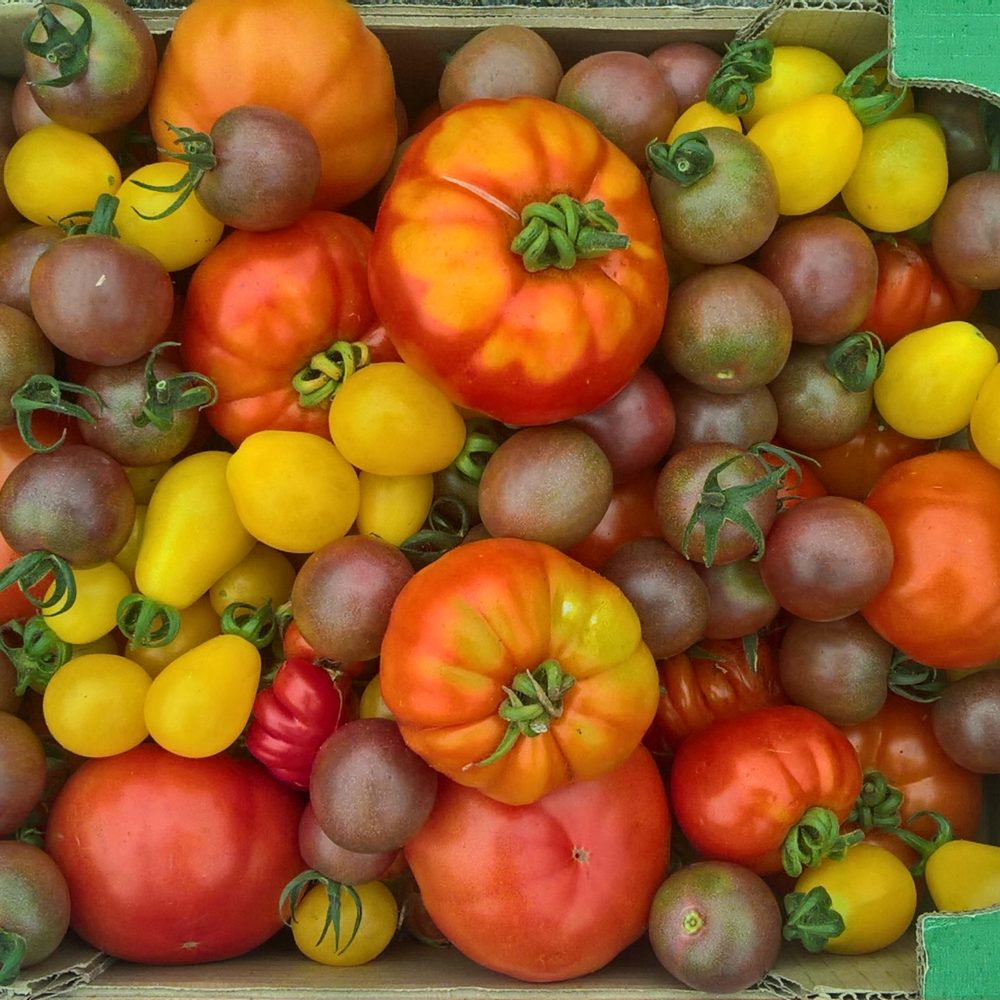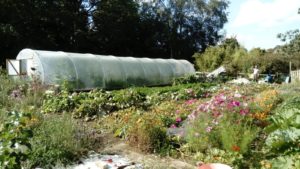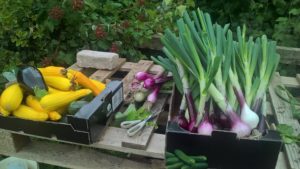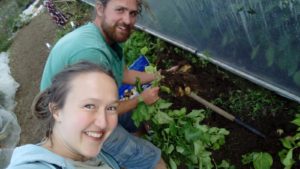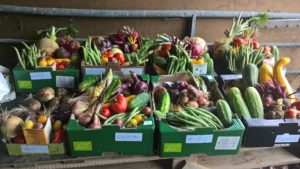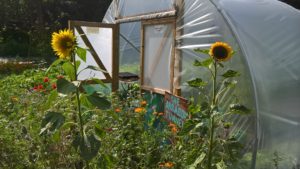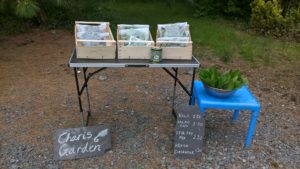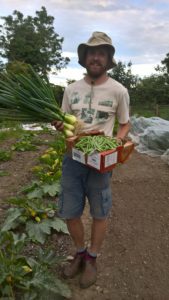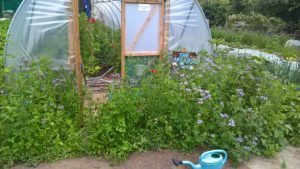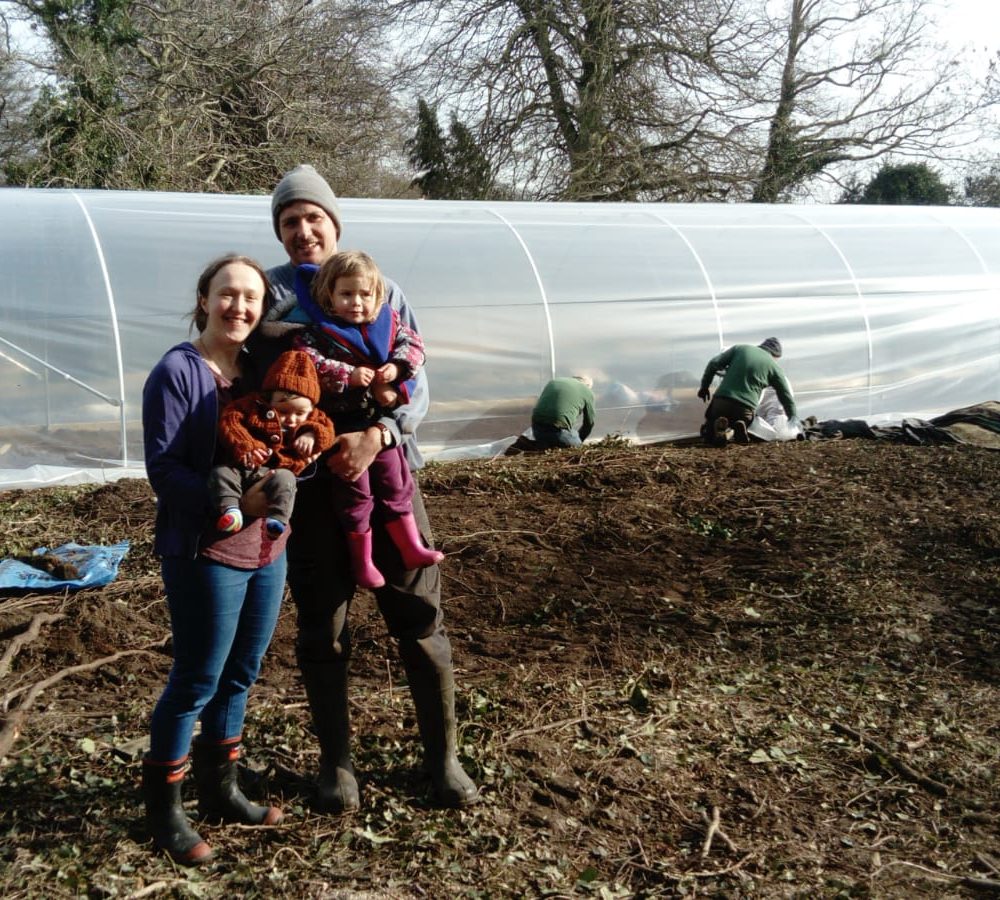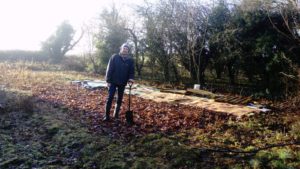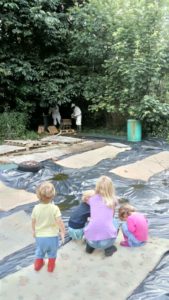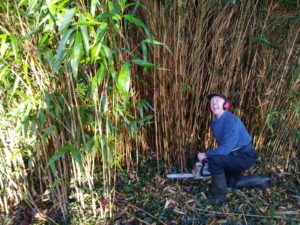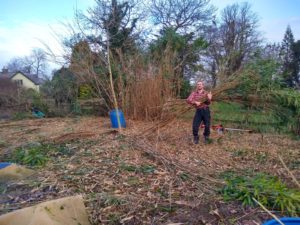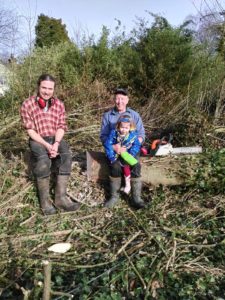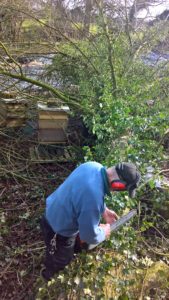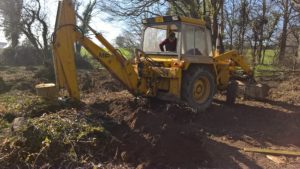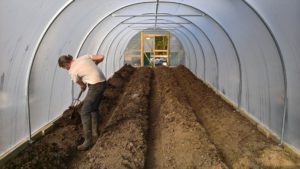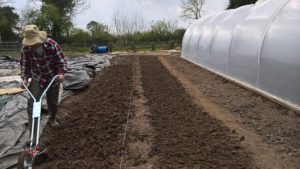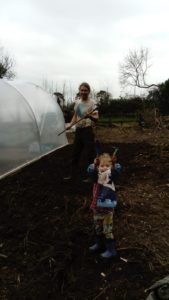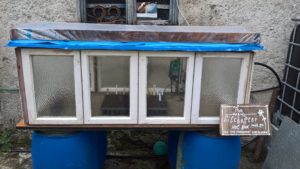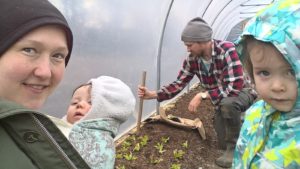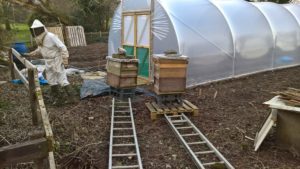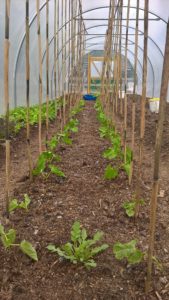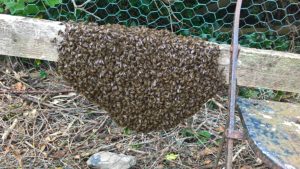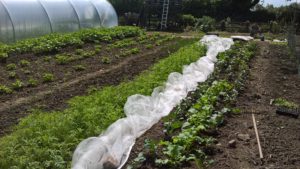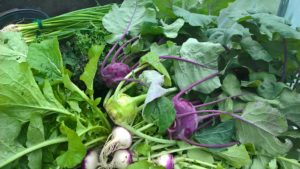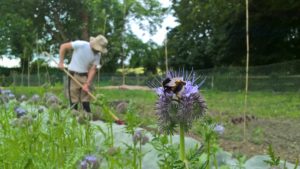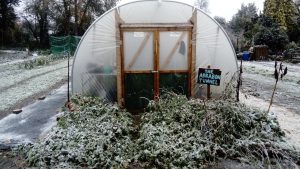
Winter. The garden looks more like it’s beginning. Bare brown earth is revealed once more in the wake of verdant harvests. Dying crops are relieved of their efforts, pulled up and lain on a compost pyre. Wizened courgette leaves and tired-out tomato tendrils will be resurrected as rich nutrients for another season’s growth. The beds are mulched with whatever we can get our hands on to nourish the soil over winter. A neighbouring riding school provides poo a plenty. Home grown compost, straw and mushroom compost complete the cocktail.
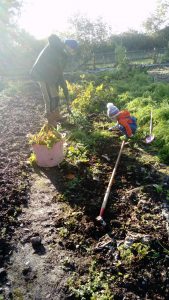
We try out some artificial mulch, as well as a special paper mulch, which will disintegrate over time. Garlic bulbs are tucked through this crepe paper blanket, and then blanketed with straw. The garlic relishes the first frosts, their journey kickstarting towards spring. With each bulb pressed into cold earth, we anticipate summer stir fries, sauces and pestos.
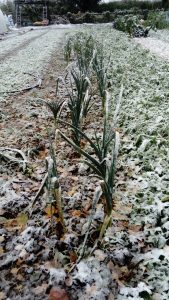
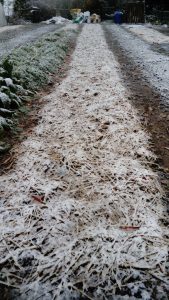
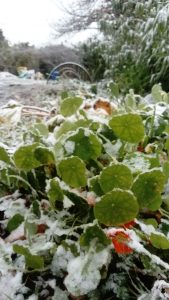
We are still eating from the garden. Stored onions and potatoes. Beetroot, leeks and carrots pulled up for dinner, sticky with dark soil. The reliable winter greens: brussels, kale and spinach. The welcome russet and gold on our plate of rainbow chard. Salad leaves and winter purslane thrive under the canopy of our tunnel. It is a wonder to behold the growth persisting through these cold dark months, nourishing us while taking little from us in terms of labour at this time.
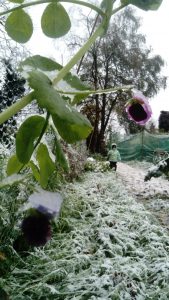
We acknowledge our need for this change of pace. We know what last Spring/Summer was like. There is something very fitting about beds lying dormant under straw as we exhale and let the garden lie a little quieter underfoot.
It has been a gift to learn the discipline and rhythm of seasonal growing and eating so far. We have tomato sauces, kale and basil pestos in our freezer and suddenly Spring doesn’t seem so far away after all.
There is much work to do in preparation for another season of growth in Charis Garden. In mid-November Jeremy put a week’s hard graft into a chainsaw course with a view to beginning clearance work in the old walled garden as well as processing firewood.
We continue to research, plot and plan for inviting hens to take up residence in Charis Garden. The threat of fox and mink mean we need to put some thought and effort into safeguarding our feathered egg offering inhabitants.
We discuss growing plans, crop rotation and plot the development of a community gathering space in the yet to be cleared wilderness of the walled garden.
